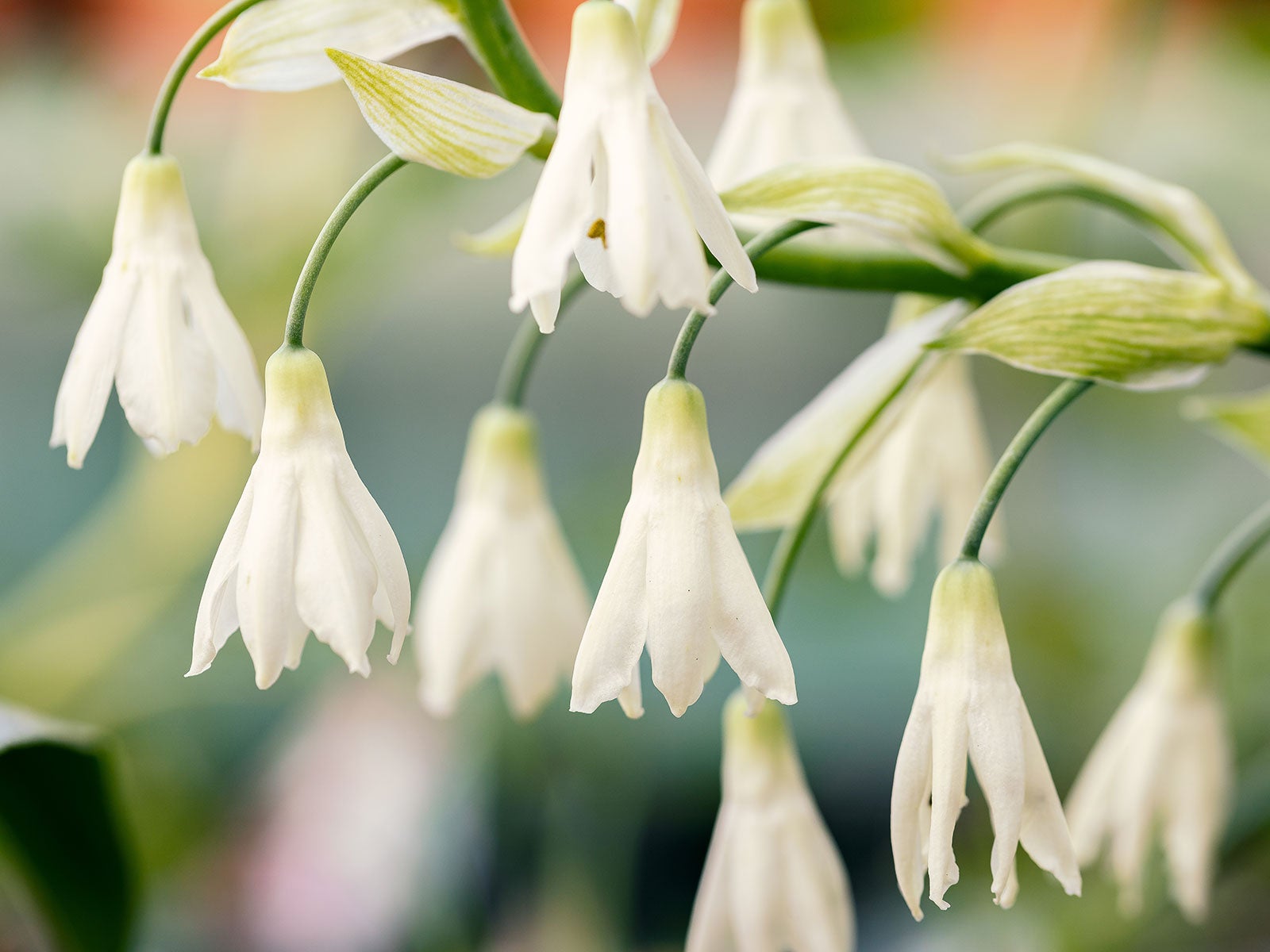Grow Ornithogalum Candicans: Add Sparkle To Borders With Summer Hyacinth


Summer hyacinth (Ornithogalum candicans) is a delicately pretty flowering plant which adds dynamic interest to flower beds and mixed borders. Though this unique bulb is relatively easy to grow, becoming familiar with its needs and growth habit will ensure that plants thrive for years to come.
The right planting and care of hyacinths is just as beneficial for this summer-flowering bulb as it is for spring-flowering varieties. As late summer bloomers, these bulbs can continue to flower for a couple months, depending on the region. Read on to find out how to add easy sparkle to late summer displays.
Quick Summer Hyacinth Facts:
- Botanical name – Ornithogalum candicans, Galtonia candicans
- Height – 24-48 inches (60-122cm)
- Spread – 24-36 inches (60-91cm)
- Sun exposure – Full sun
- Soil requirements – Well draining
- Hardiness zones – USDA zones 6-10
- When to plant – Late winter, early spring
Care for Ornithogalum candicans
Best Light
Ornithogalum are full-sun plants and rely heavily on direct sunlight to produce their tall blooms. Summer hyacinths easily withstand the brightest of garden beds. As with other full-sun perennials, you should make certain the plants receive at least six hours of direct light each day. While they can tolerate partial shade, too much may negatively impact its ability to produce flowers.
Watering Plants
Keep summer hyacinths consistently moist at planting and throughout the spring to help them establish a robust root system. Though they can withstand brief periods of drought, irrigating them routinely will aid in their flower stalk development. Continue weekly watering until the plant stops producing flowers. You can then begin to water less frequently.
Temperature & Humidity
Summer hyacinth plants are able to withstand both heat and humidity. This makes them ideal for growing if you experience especially hot conditions throughout summer. However, prolonged periods of high heat and humidity may cause the plant to become stressed. If this might be an issue, use shade cover or soaker hoses to help ensure that plants flourish.
Soil & Compost
Ornithogalum candicans thrive under a wide range of conditions, but they prefer neutral soils (with a pH of 6.5-7) and excellent drainage. They can tolerate clay, but they grow best in rich loam or sandy soils. Prepare flower beds with a high-quality garden compost before planting to aid overall health and the production of flowers through the first growing season.
Fertilizing Plants
Though it’s not essential, it can help to fertilize summer hyacinth plants annually. You should ideally do this in early spring as new growth begins. However, the plants can be fed any time before they have started to produce buds. A well-balanced, slow-release feed is often the best choice. Cease any fertilizing once blooms have started to develop.
Sign up for the Gardening Know How newsletter today and receive a free copy of our e-book "How to Grow Delicious Tomatoes".
How to Plant Summer Hyacinth Bulbs
Summer hyacinths (also known as Galtonia candicans) are most frequently grown from bulbs. Within their hardiness zone, plant these as soon as the soil can be worked in late winter or early spring. Dig to a depth that is approximately twice the height of each bulb. Be certain that the bulb’s tip is facing up and begin to gently backfill the soil into the hole. Water new plantings well, then leave them until the bulbs begin to grow.
Pruning Ornithogalum Candicans
In terms of pruning, summer hyacinth flowers don’t require special care. However, deadheading flowers can prevent the production of seed and keep flower beds looking tidy. If you remove the stalks shortly after flowers fade and leaves turn yellow, this can also keep hyacinths blooming for longer. To remove spent summer hyacinth blooms, follow each stalk back to the ground, making certain to clip carefully.
Propagating Summer Hyacinth
You can propagate established plantings of Ornithogalum candicans if you divide plants and replant them. In fact, bulb division is often necessary to help encourage the continued production of flowers. This can occur any time while the plants are dormant. Late winter is an ideal time, before the plants’ growth resumes for the season.
Ornithogalum Candicans Problems, Pests & Diseases
Summer hyacinths seldom need special attention and are relatively free from disease. One potential issue is rot, which may lead to the loss of plants. For this reason, you should take care to avoid overwatering. Infestations of aphids are common, but you can treat these with homemade aphid controls and natural predators. Also keep an eye out for snail and slug eggs in early spring, as molluscs tend to gravitate towards tender new growth.
Frequently Asked Questions
Where is the Best Place to Grow Ornithogalum Candicans?
Summer hyacinths are best used in perennial landscapes and mixed borders. Make sure that your chosen spot has access to plenty of sunshine and that the planting site has been adequately prepared. Their unique flower stalks add both height and texture to the growing space.
Do Summer Hyacinths Make Good Cut Flowers?
In recent years, Ornithogalum candicans has gained popularity among cut flower farmers and is often praised for its longevity and vase life. Summer hyacinth flowers add height and brightness to a range of color schemes and thematic groupings.

Tonya Barnett has been gardening for 13 years. Flowers are her passion. She has transformed her backyard into a cut flower garden, which she regularly chronicles on her YouTube channel http://www.youtube.com/@tonyawiththeflowers.